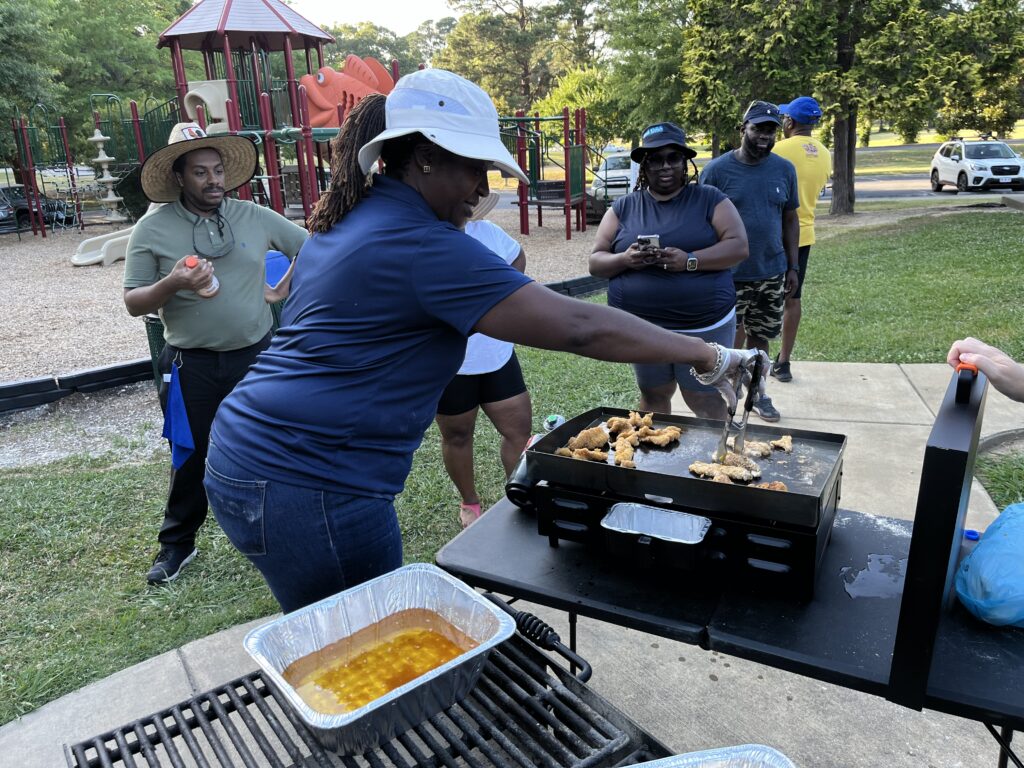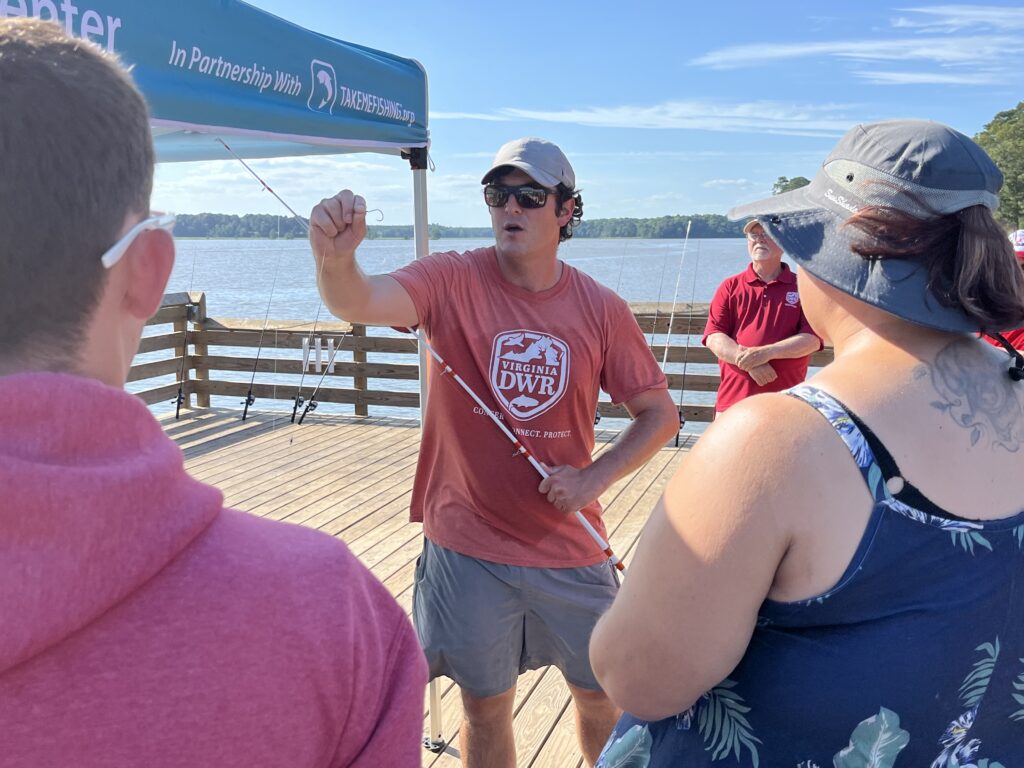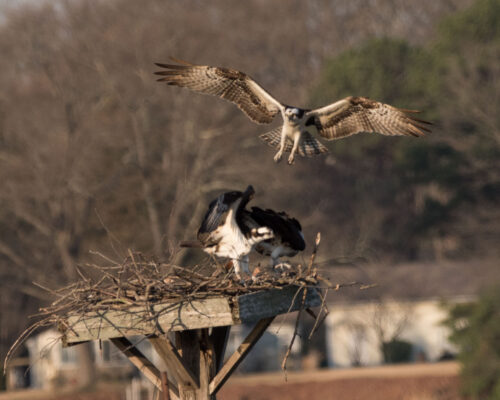If the Chesapeake’s invasive blue catfish are lemons, it’s time to make lemonade.
On Thursday, June 20, fishery biologists from the Virginia Department of Wildlife Resources (DWR), local celebrity anglers, and a handful of volunteers (including this correspondent) provided a hands-on, riverside field workshop for 30 aspiring anglers on the long fishing pier at Chickahominy Riverfront Park near Williamsburg.
The goal: to make catching blue catfish accessible and appealing, pulling as many of the nuisance fish from the Bay as possible.
Led by DWR’s Aquatic Education Coordinator, Alex McCrickard, the team prepared three dozen spinning and spin-cast rods and reels with sliding-sinker Carolina rigs and laid out a blue cat bait smorgasbord of night crawlers, fresh cut fish of various species, and eel chunks.
When the participants arrived, McCrickard provided a short demonstration of the rigs and bait assortment, and then described the bottom depths and water conditions around the pier. The team members helped each participant bait a line, find a spot along the pier rail, and cast it out into the river. Celebrity friends included Capt. Mike Ostrander, longtime fishing and wildlife guide of Discover the James and Tiffany “Snookie” Risch of the Snookie Fishing YouTube channel.
The afternoon was hot, so everyone was thankful for the tent DWR provided on the pier’s T-head and its cooler of water. The fishing was not fast, but as participants and helpers chatted, the first blue cats began coming aboard. As they did, Margi Whitmore, DWR’s lead Tidal Rivers Fisheries Biologist, gave an informal presentation on blue catfish biology, including the management objectives and goals of the agency for the future of blue catfish in Virginia, especially as a recreational resource. The fish are abundant, readily accessible, fun to catch with simple equipment, and very good to eat.
To prove the point, veteran DWR Fisheries Biologist Scott Herrmann picked up a fillet knife and began to demonstrate the technique for dressing out a cat. As he and McCrickard pointed out, the fish’s chin barbels are soft and strictly there for tasting and smelling. The tricky part of handling these fish lies in the sharp spines of their dorsal and pectoral fins. McCrickard showed how to hold a cat by the belly, using thumb and little finger to spread the pectoral spines forward so they lock in their sockets, securing the fish for handing off to Herrmann at the cleaning table. From there, the technique is straightforward, and Herrmann is an experienced teacher. For a look at how the technique works, here’s a good YouTube video.

Rivah Sistah Patricia Clement collaborated on the event and provided the cooking inspiration. She had set up her grills at the campground’s pavilion to cook the catch and show participants some basic recipes. She provided samples, of course, bringing smiles all around. Since Virginia’s rivers are home to a gracious plenty of blue catfish, DWR’s fishery scientists need to make more lemonade. Chesapeake Bay Magazine will keep you posted on future workshop offerings.




